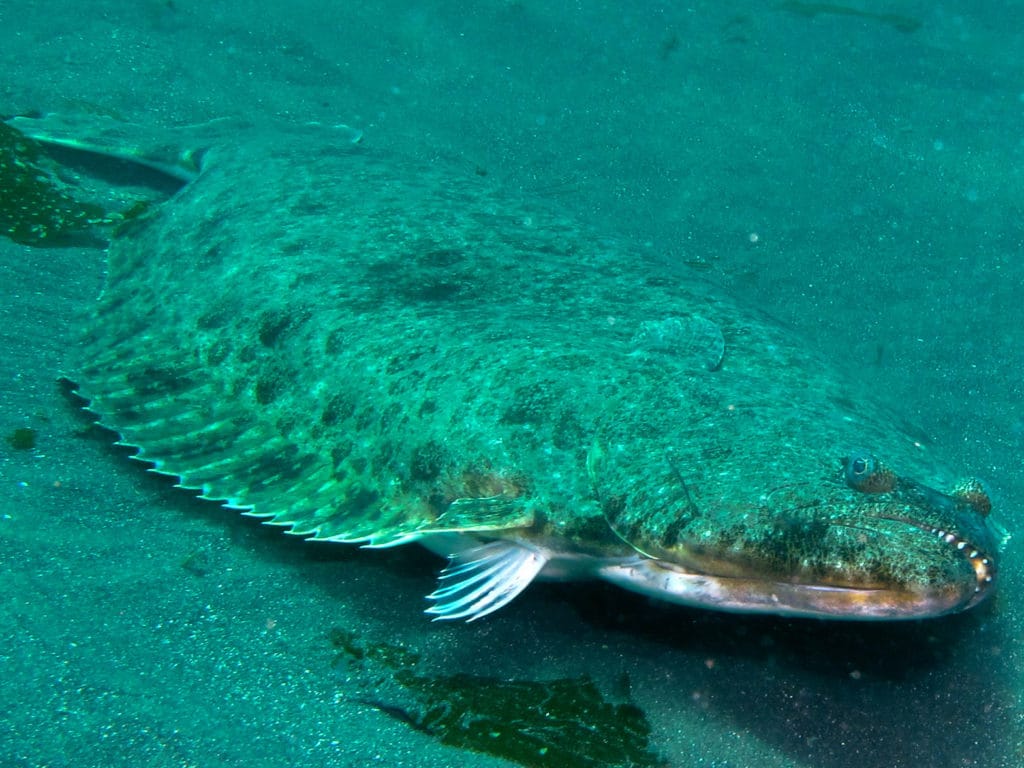
Some anglers might think of California halibut as lazy bottom feeders. But that’s far from reality. This flatfish species can become an active and aggressive predator, as well as an ambush hunter. Though not reaching the size of Pacific (aka Alaskan) halibut, the California halibut can grow to weights in excess of 50 pounds. The California state record currently stands at 67 pounds, 4 ounces.
Fishing techniques for catching California halibut include drifting with live bait and working lures along prime bottom areas. Yet one of today’s most effective methods involves slow-trolling lures and baits near the bottom using a heavy cannon-ball sinker that intermittently bounces along the ocean floor, giving rise to the name for this technique—ball-bouncing.
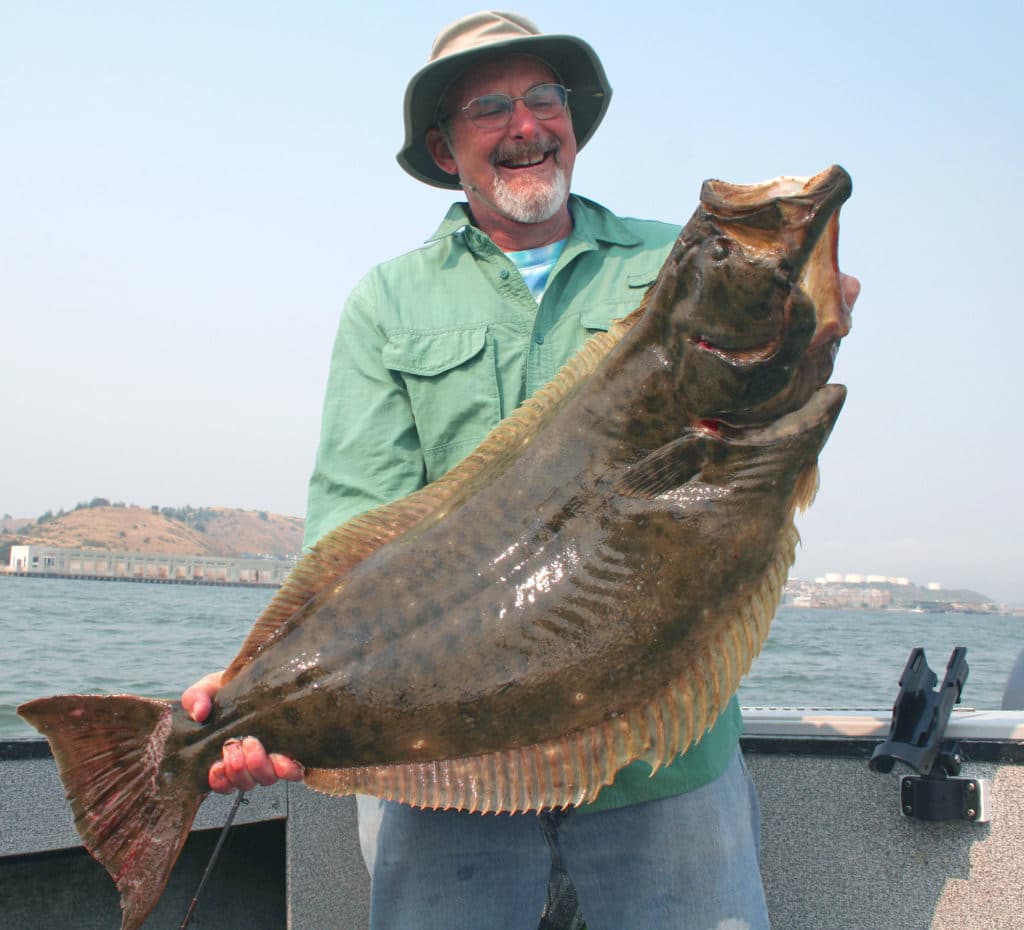
Salmon Origins
Credit discovery of this method to anglers trolling for salmon off the California coast with cannon-ball sinkers. Some found that presentations trolled near the bottom, though intended for salmon, were hooking halibut.
Soon, California anglers from San Francisco Bay in the north to the coastal waters off Dana Point in the south began to target halibut with this type of trolling—especially when salmon season closed—and gradually refined details such as the lures and baits to make the technique even more effective for enticing the tasty flatfish to strike. It takes experience to get rigging, line depth and trolling speed right, but once perfected, no technique more consistently works for catching big halibut.
In this video, editor Jim Hendricks walks us through rigging a ball-bouncing setup.
Rig It Right
While there are a number of variations, a ball-bouncing terminal rig generally consists of a three-way swivel tied to the main line. At the bottom of the three-way swivel is a 12- to 15-inch length of 30-pound-test monofilament with a 1 1/2- to 2-pound cannon-ball sinker tied to the bitter end. To the middle leg of the three-way swivel tie a 4- to 5-foot length of 40-pound monofilament with a 6- to 8-inch chrome dodger—this creates a commotion that draws halibut in to investigate. A trailing lure (more on this later) is tied with 40-pound-test about 15 inches behind the dodger.
Some anglers like to use live bait such as a sardine or small Pacific mackerel instead of a lure, employing a 3/0 to 4/0 hook pinned sideways through the bait’s nose. Still others like to use dead baits such opalescent squid.
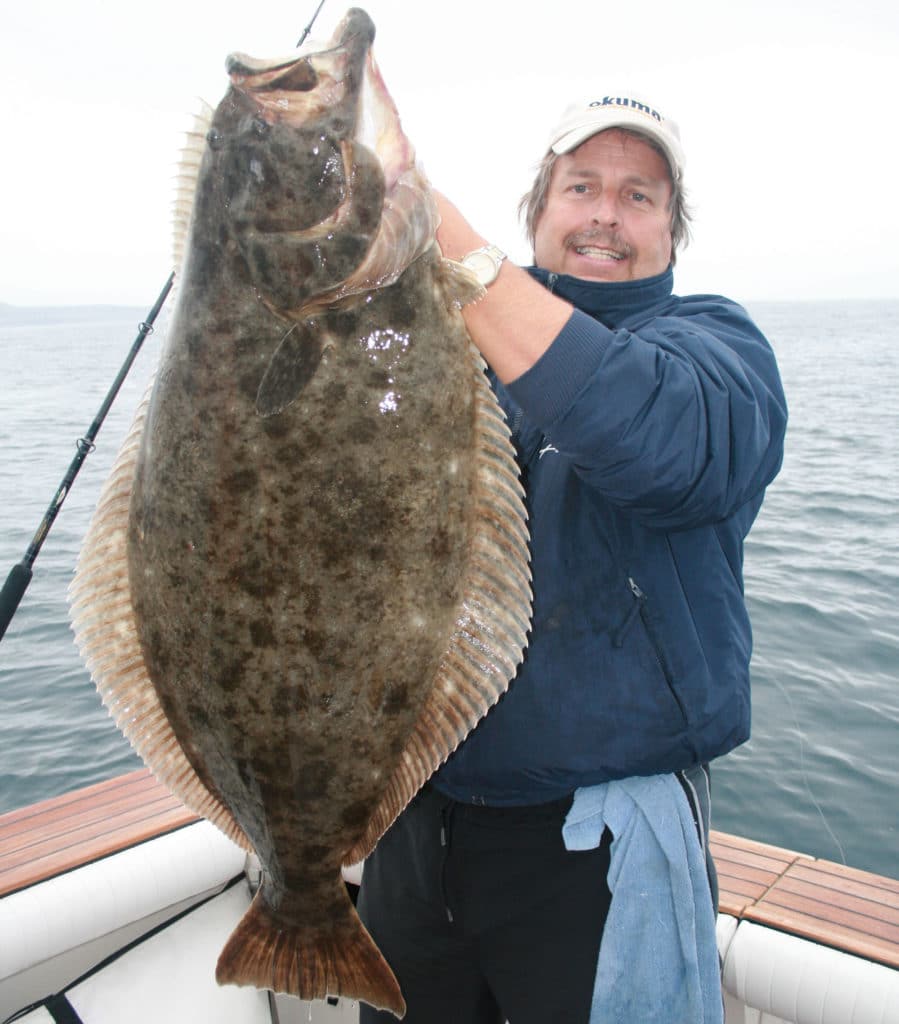
Don’t Drag It
Ball-bouncing requires a trolling speed that, with the right amount of line, allows the cannon-ball sinker to bounce on the bottom two to three times per minute. The rationale is that an occasional thump in sand or mud attracts attention from a flatfish that follows the pulsating dodger to investigate, then finds the lure or bait swimming behind.
Trolling speed can be affected by wind or current, but it’s really the lure speed through the water that’s critical. With conventional outfits spooled with 50-pound braid positioned in the gunwale rod holders, use the rod tips to gauge the correct speed. They should pulsate smoothly if the dodger is swimming correctly side to side. The tip will also spring upward every 20 to 30 seconds—a sign that the weight is bouncing on the bottom at the correct intervals.
Generally speaking, speeds range from 1.5 to 2.5 mph, depending on the size of the dodger and lure, and you want enough line out to bounce on the bottom occasionally. Too much line leaves the weight dragging along the bottom, evidenced by the rod tip jerking up and down erratically.
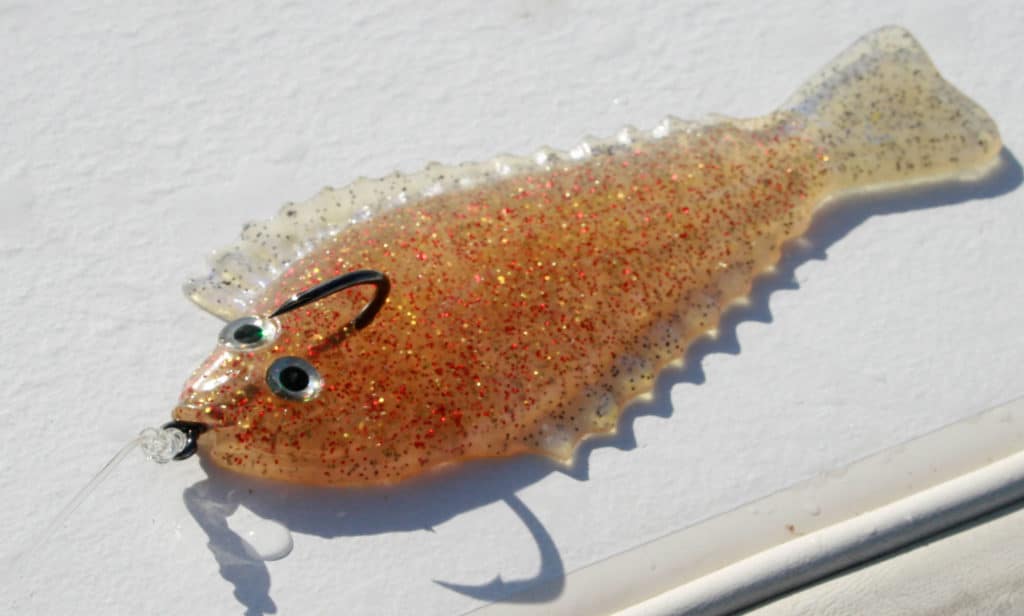
Lures and Baits
Long-time California angler Capt. David Bacon employs an array of lures, but one of the most trusted is a 4- to 6-inch hoochie skirt pre-rigged with a small plastic piece that fits inside the head of the hoochie to maintain it’s shape (known as a gumpuckie) and a hook such as an Owner 3/0 to 5/0 Aki Light. Some anglers add a 1/0 treble trailing hook (aka stinger) to help improve the hookup ratio. The hoochie skirt slides on the leader to accommodate the addition of a natural bait (such as a dead squid) or a soft-plastic bait under the skirts.
Some anglers like to run two hoochie skirts—one inside the other for extra bulk. Aboard Bacon’s boat, for example, he often inserts a 4¼-inch glow-in-the-dark skirt inside a 6-inch purple or pink skirt. Hoochies have no action of their own, but the dodger imparts a side-to-side swimming motion.
Bacon also likes to use the 5-inch Sand Dab from Kustom Kraft. This soft-plastic flatfish imitation is typically rigged with a single 6/0 Owner Aki Twist hook protruding from the back, so the artificial swims just like a sand dab, a small flatfish common off the coast of Southern California.
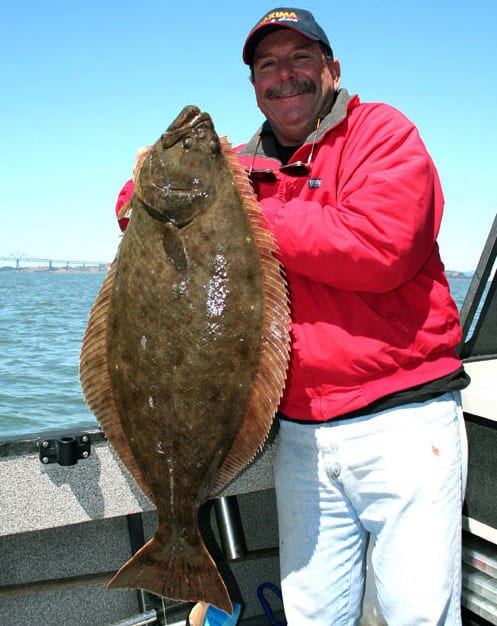
Finding Halibut
Though California halibut haunt depths down to 200 feet or more, the maximum depth for effective ball-bouncing lies around 100 feet. Anything deeper puts too much of a bow in the line to reach the bottom while slow trolling.
Prospecting is the name of the game, but this trolling technique allows you to continually cover new water until you find a fish. Yet once you hook a halibut, you often find others. While inexperienced anglers might keep moving along after they catch a fish, it’s a good idea to troll back over the same area to see if other fish are around.
Read Next: Best Spots for California Halibut
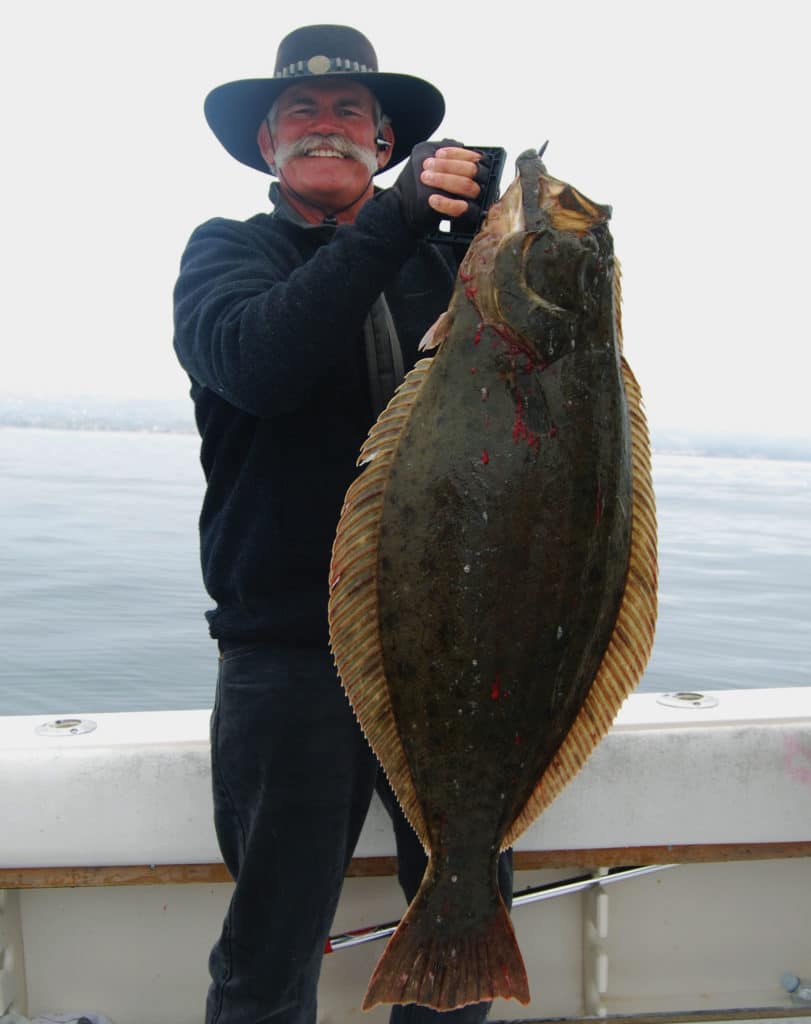
Getting Bit
When a halibut bites, the rod usually bows over hard. Yet sometimes the bite proves subtle with only a slight bend in the rod tip, an indication that the fish has grabbed the lure, but is swimming with it in the same direction as the boat is moving. When you see this, pick up the rod and wind down quickly, then set the hook.
California halibut—even the big ones—are not dynamic fighters, and so you can often ease the fish up to within gaff or net range with steady, gentle pressure. Don’t pump the rod, as this can trigger head shakes that rip the hook loose. Some fish uncork a last-minute run when they see the boat, so keep the drag fairly loose to accommodate a sudden sprint.
With a big California halibut lying across the deck, you’ll quickly become a firm believer in the slow-trolling technique known as ball-bouncing.








